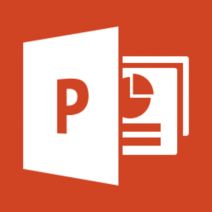Directive Blogs
Microsoft PowerPoint is Useful, but Not In the Courtroom
 We all know Microsoft PowerPoint as a great presentation tool which can help you drive information home to the audience. Naturally, this makes it a great medium for use in more than one type of professional environment. It can be used for webinars, lectures, and even the courtrooms; but is a legal trial really a place for a slideshow?
We all know Microsoft PowerPoint as a great presentation tool which can help you drive information home to the audience. Naturally, this makes it a great medium for use in more than one type of professional environment. It can be used for webinars, lectures, and even the courtrooms; but is a legal trial really a place for a slideshow?
Why is this the case? For one, PowerPoint allows users to make a powerful case for or against something. In fact, this practice is widely accepted in all venues of the professional environment, so you’d think that PowerPoint would be exceptionally useful for the defense attorney.
Unfortunately, it only makes things more difficult for them, since the prosecutor has access to the same kind of technology. In a Washington court case, the prosecutor was brought up on charges for an exceptionally incriminating PowerPoint presentation, which was used as the prosecutor’s closing statement.
In fact, according to WIRED magazine, “US courts have reversed a criminal conviction because prosecutors violated the rules of fair argument with PowerPoint,” at least 10 times over the past two years. You might be wondering what constitutes fair use of PowerPoint in presenting a court case, but instead, we’ll tell you what you shouldn’t do: Don’t use the defendant’s mug shot in a slide with a big, red “GUILTY” across it.
The reasoning for this is simple, yet ever so complicated at the same time. Legal scholars are calling this method “visual advocacy,” which can be considered the influencing of a jury’s decision through manipulating the subconscious signals sent via an image. For instance, displaying a picture of a criminal in their prison garb in the slideshow eliminates the notion of innocence before proven guilty, which is what the court system of the United States is built on. In the words of the Washington Supreme Court, captions like the previously mentioned one would be “the equivalent of unadmitted evidence.”
It’s a very touchy subject that can be convoluted to understand. Seeing how strongly a PowerPoint can influence the decision of a jury, it’s not surprising that PowerPoints can be exceptionally potent solutions for displaying an argument. After all, just because it doesn’t translate well to the courtroom doesn’t mean that it’s not without its uses. It’s a well-known fact that businesses around the world are taking advantage of PowerPoint to craft compelling, engaging mediums which augment a lecture or presentation, so it’s understandable that all professions desire to take advantage of slideshows.
However, in order for PowerPoint presentations to excel in the courtroom, more powerful laws governing what’s allowed in visual aids will likely need to be put into effect. If not, more prosecutors will likely try their hand at some of these shenanigans.
Whether it’s moral to shove the guilty verdict on someone in a slideshow might be up in the air, but it’s fairly safe to assume that prosecutors who use presentations for this purpose are simply taking advantage of the technology available to them to better perform their duties and uphold the laws of society.
What are your thoughts on PowerPoint as a presentation medium? Do you have any slideshow best practices you’d like to share? Let us know in the comments.


Comments